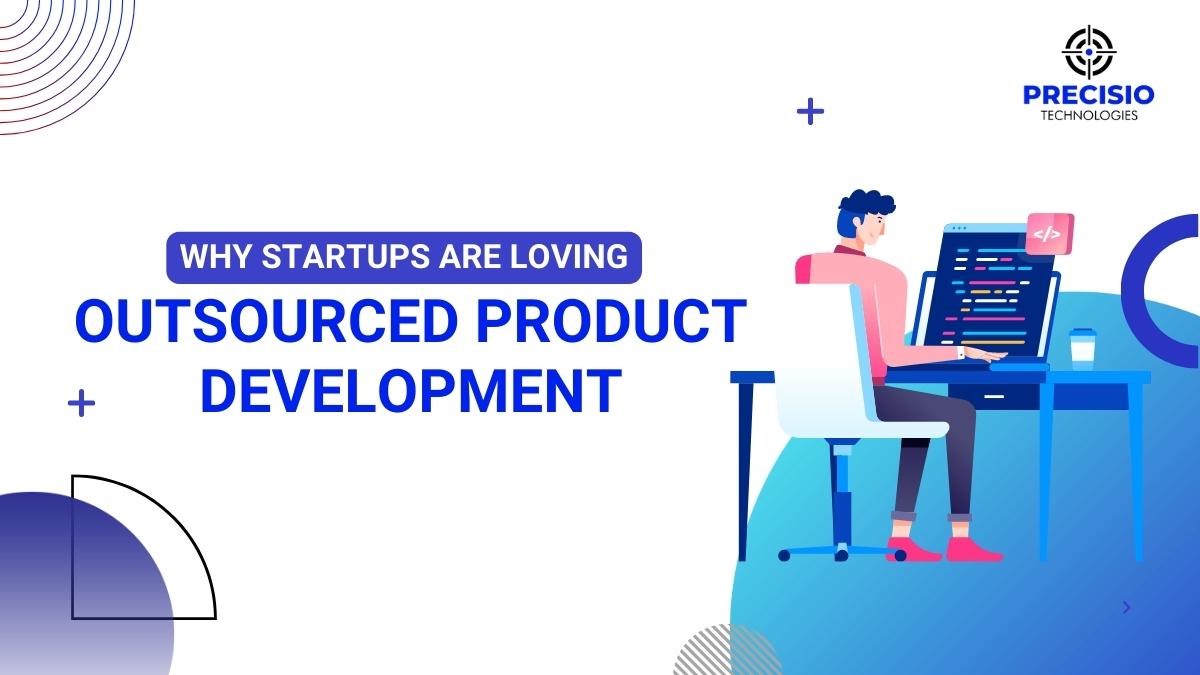
Outsourced product development (OPD) is the process of working with an external company or team to design, develop, and bring a product to market. This can include product research and development, prototyping, manufacturing, and even marketing and sales. In this blog post, we will learn the advantages and reasons why start-ups love outsourced software development.
What Is Outsourced Product Development?
Companies often outsource product development for a variety of reasons, such as access to specialized expertise, cost savings, and the ability to bring products to market more quickly.
There are a few different forms that OPD can take, depending on the needs and goals of the company. One common form is offshoring, where a company works with a team in another country to develop a product. This can be an effective way to take advantage of lower labor costs and other cost savings, but it also comes with its own set of challenges, such as communication barriers and cultural differences.
Another form of OPD is open innovation, where a company works with external partners, such as other companies, universities, and research institutions, to develop new products. This can provide access to a wide range of expertise and resources, but it also requires careful management and coordination to ensure that everyone is working towards a common goal.
OPD is not a new concept, more and more companies are using this method as the cost of outsourcing is much lower than hiring an internal development team, where the company could not only save money but also gain efficiency and knowledge from external experts in their field.
Outsourced Product Development Company: Benefits For New Project
Outsourced software product development can offer several benefits for new projects. Some of the main advantages include:
- Cost savings: Outsourcing software development can be more cost-effective than hiring an in-house team. This is because companies can take advantage of lower labor costs in other countries and/or the vendor’s economies of scale.
- Access to specialized expertise: Outsourcing can provide access to a wider pool of skilled software developers, designers, and other experts. This can be particularly beneficial for niche or complex projects that require specialized knowledge.
- Faster time-to-market: Outsourcing can help companies bring new software products to market more quickly, as external teams can work simultaneously on development, testing, and deployment.
- Flexibility: Outsourcing allows companies to scale up or down their development team as needed, which can be beneficial for projects with unpredictable or rapidly-changing requirements.
- Improved quality: Companies often have well-established processes and quality assurance procedures in place, which can help ensure that the final product meets high standards of quality and reliability.
- Reduced Risks: Outsourcing provides a way for companies to minimize the risks of new projects. In case the project doesn’t go well, the company does not end up losing all the investment as it would happen if they develop in-house.
- Focus on core competency: By outsourcing software development, companies can free up resources and focus on their core competencies, such as product innovation, marketing, and sales.
It is important to keep in mind that outsourcing is not a silver bullet, and it’s crucial to do your due diligence when selecting a vendor and to communicate effectively to align goals and achieve the desired outcomes.
Detailed Explanation: Outsourced Software Product Development Process
The outsourced software product development process typically involves several key stages:
- Planning: The first step is to define the project scope, objectives, and requirements. This includes identifying the target market, defining the product features, and determining the budget and timelines for the project. The project scope, objectives, and requirements should be communicated to the outsourcing vendor.
- Design: The next step is to design the user interface (UI) and user experience (UX) for the software product. This includes creating wireframes, mockups, and prototypes of the product. The vendor will also work with the company to develop the software architecture and ensure that the product is scalable and secure.
- Development: This is the stage where the software is built. The vendor will use the designs and specifications from the previous stage to develop the software product. Depending on the project, this may include writing code, integrating third-party libraries and services, and performing testing and debugging.
- Testing: After the development stage, the vendor will perform testing to ensure that the software product meets the requirements and is free of defects. This may include unit testing, integration testing, and acceptance testing.
- Deployment: Once the software product has been tested and is deemed ready for release, it will be deployed to the target environment. This may include installing the software on servers, configuring the infrastructure, and setting up any necessary integrations with other systems.
- Maintenance and Support: After the product is deployed, the vendor will provide ongoing maintenance and support to fix any bugs or issues that arise and ensure that the software continues to function properly.
It’s worth noting that these stages may not be linear and may vary depending on the specific project and vendor. For example, development, testing, and deployment may happen simultaneously, or the vendor may use Agile development methodologies where the process is iterative and incremental. It is important to have clear communication and to establish a workflow that fits the company’s needs.
Conclusion:
In this blog, we learned what outsourcing product development (OPD) is and its advantages. But that’s not it. We also covered how it could be effective for startups and businesses. The steps and processes followed during the life cycle were also explained. If you want to learn more about it or want to develop your software product, contact us today or learn more about our software product development service.
